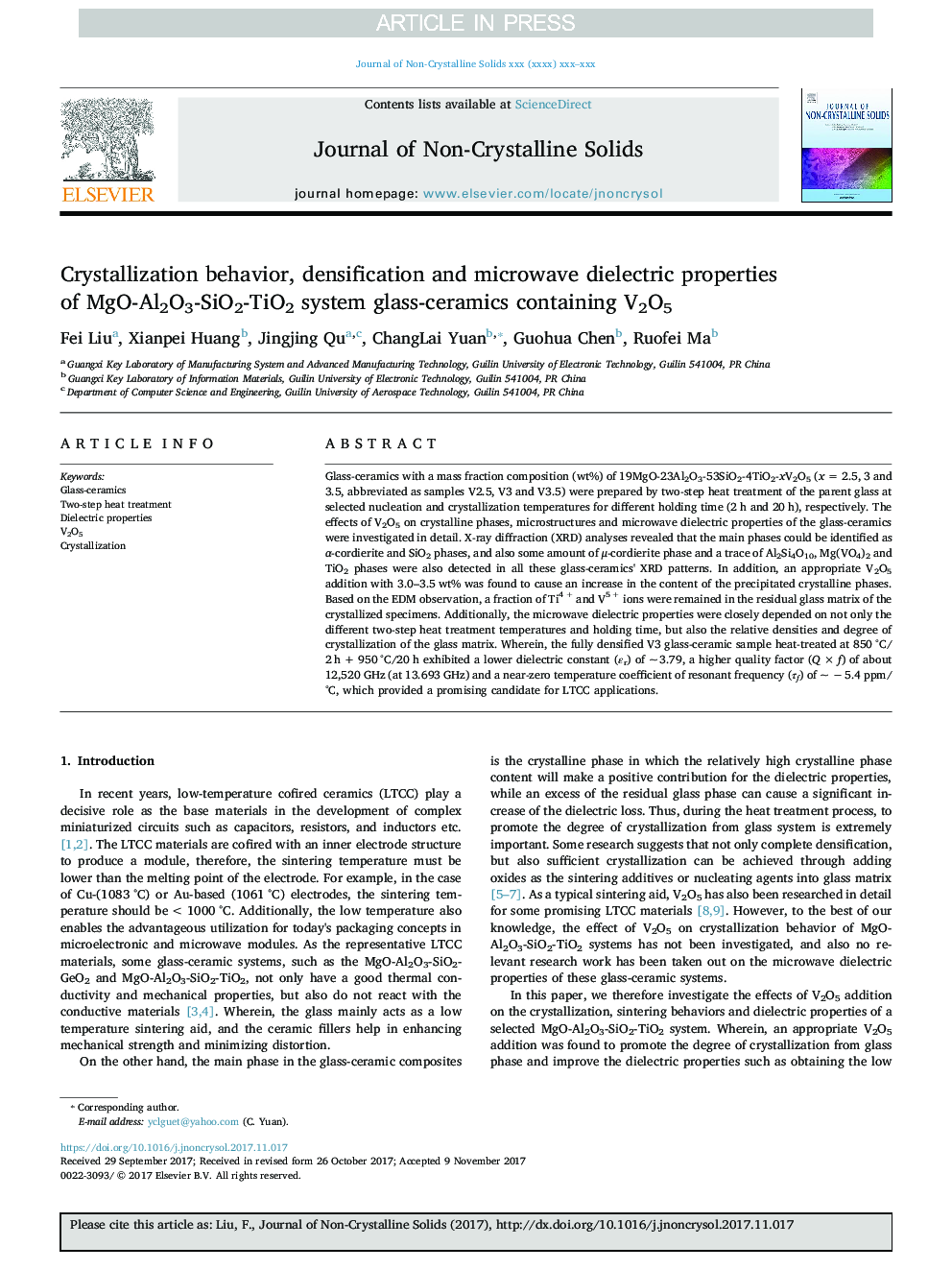| Article ID | Journal | Published Year | Pages | File Type |
|---|---|---|---|---|
| 7900423 | Journal of Non-Crystalline Solids | 2018 | 6 Pages |
Abstract
Glass-ceramics with a mass fraction composition (wt%) of 19MgO-23Al2O3-53SiO2-4TiO2-xV2O5 (x = 2.5, 3 and 3.5, abbreviated as samples V2.5, V3 and V3.5) were prepared by two-step heat treatment of the parent glass at selected nucleation and crystallization temperatures for different holding time (2 h and 20 h), respectively. The effects of V2O5 on crystalline phases, microstructures and microwave dielectric properties of the glass-ceramics were investigated in detail. X-ray diffraction (XRD) analyses revealed that the main phases could be identified as α-cordierite and SiO2 phases, and also some amount of μ-cordierite phase and a trace of Al2Si4O10, Mg(VO4)2 and TiO2 phases were also detected in all these glass-ceramics' XRD patterns. In addition, an appropriate V2O5 addition with 3.0-3.5 wt% was found to cause an increase in the content of the precipitated crystalline phases. Based on the EDM observation, a fraction of Ti4 + and V5 + ions were remained in the residual glass matrix of the crystallized specimens. Additionally, the microwave dielectric properties were closely depended on not only the different two-step heat treatment temperatures and holding time, but also the relative densities and degree of crystallization of the glass matrix. Wherein, the fully densified V3 glass-ceramic sample heat-treated at 850 °C/2 h + 950 °C/20 h exhibited a lower dielectric constant (εr) of ~ 3.79, a higher quality factor (Q Ã f) of about 12,520 GHz (at 13.693 GHz) and a near-zero temperature coefficient of resonant frequency (Ïf) of ~ â 5.4 ppm/°C, which provided a promising candidate for LTCC applications.
Related Topics
Physical Sciences and Engineering
Materials Science
Ceramics and Composites
Authors
Fei Liu, Xianpei Huang, Jingjing Qu, ChangLai Yuan, Guohua Chen, Ruofei Ma,
